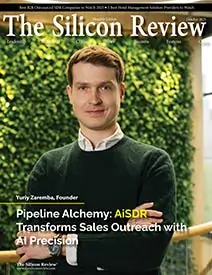>>
Industry>>
Animation>>
Hybrid Animation is Quietly Re...Hybrid Animation is Quietly Rewriting Production Norms in 2025
The Silicon Review
16 April, 2025
The fusion of 2D and 3D animation isn’t just a stylistic choice—it’s transforming pipelines, workforce structures, and the future of scalable content creation.
In a significant shift within animation production, the hybrid use of 2D and 3D animation is no longer just an aesthetic preference—it’s becoming an operational model reshaping the animation industry’s workflow and automation strategies in 2025. Sparked by the continued success of groundbreaking productions like Spider-Verse and Arcane, the convergence of these formats is now a standard across studios seeking efficiency, visual innovation, and global appeal. The integration is more than visual flair. Studios are now leveraging automation platforms that allow 2D artists to map their designs onto 3D rigs, reducing turnaround times while preserving stylistic depth. Industrial automation tools—once reserved for manufacturing—are entering animation pipelines through AI-assisted scene construction and real-time rendering technologies, streamlining asset reuse and localization for global markets.
What makes this development particularly disruptive is its downstream impact on hiring models, budget allocations, and software interoperability. Studios are now prioritizing cross-functional talent proficient in both 2D conceptualization and 3D execution, a shift that’s influencing how art schools and training programs are reshaping their curriculums. Moreover, pipeline automation is driving a reduction in post-production bottlenecks, enabling faster delivery for OTT platforms hungry for high-quality, and serialized content.
Industry insiders are treating this hybridization not as a trend, but as a structural evolution—one that’s triggering investment into bespoke automation tools tailored for creative environments. For production heads and studio executives, the takeaway is clear: survival in the new animation economy hinges not just on creative excellence, but on the strategic integration of hybrid techniques backed by smart automation. As production costs rise globally, the studios that scale effectively will be those that master the hybrid model—both artistically and operationally.


_2025-11-17_06-38-14.webp)

 (1)_2025-10-21_13-35-14.webp)

_2025-10-02_10-21-48.webp)